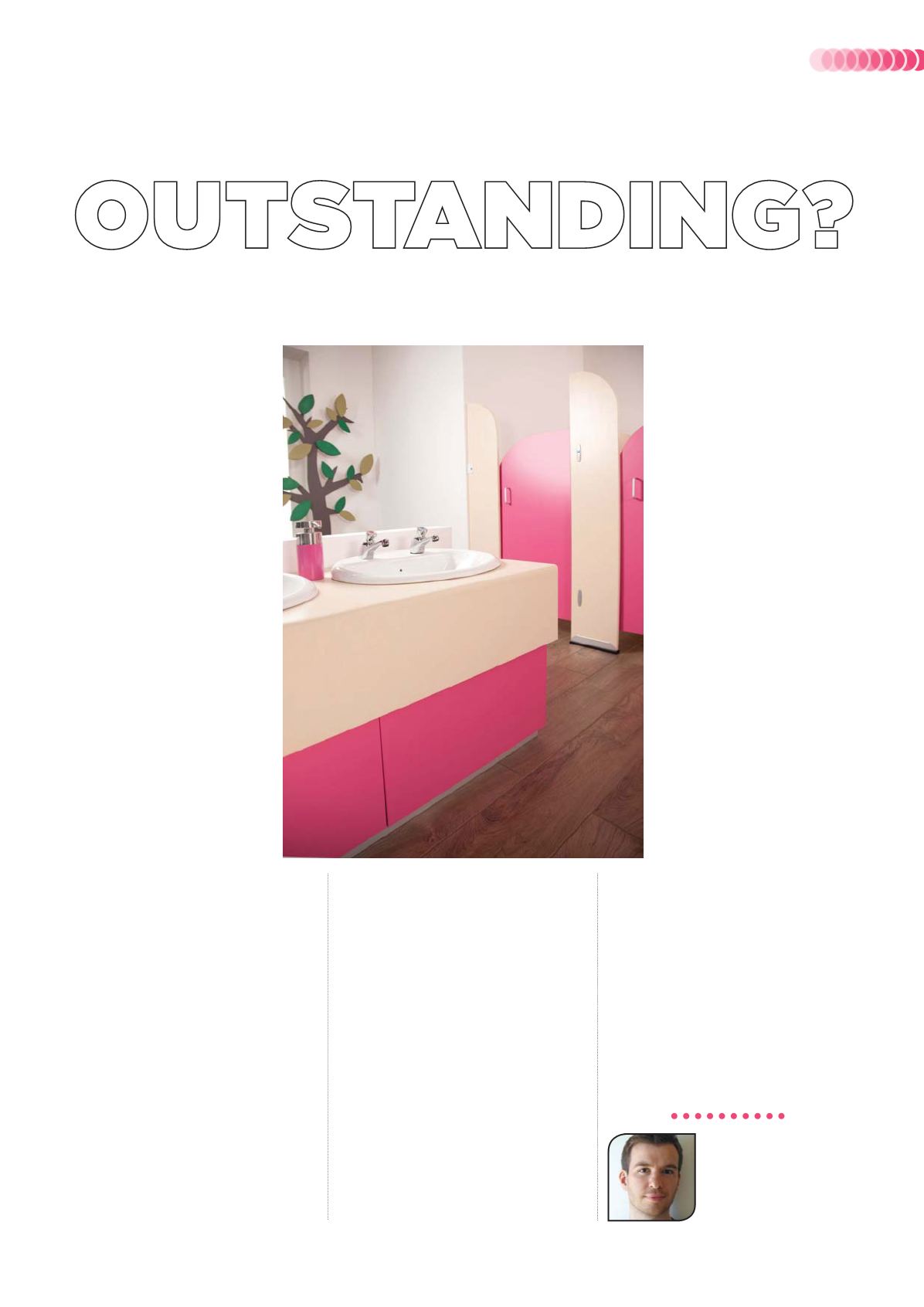
earlyyears.teachwire.net
39
nursery business
ARE YOUR WASHROOMS
Improving your nursery’s toilets might not be at the top of your list of priorities, but
don’t underestimate their importance to children’s wellbeing, says
Ged Hirst...
A
s a nursery owner
(or someone who
is planning to be)
you have a million
things to think
about. Schedules, staff, activities,
the children, parents, not to
mention the dreaded Ofsted. You
are pretty busy. So where on the
list is planning the washrooms?
Where do you even start? Just
how important are the toilets for
your children?
The nursery toilets might be
the first your children use away
from home. These washrooms
affect how they develop personal
hygiene and perceive public toilets
in the future. So do you provide
cramped, grubby toilets that your
children hate? Or do you plan
outstanding washrooms that will
last for years to come?
Don’t feel overwhelmed or
fear for your budget. Here are
four areas you need to consider
when planning a washroom
refurbishment. Following these
recommendations guarantee
fantastic nursery toilets that don’t
have to cost the world...
Safety first
The top priority is the children’s safety
when using the facilities. Ensure the toilets
are cleaned often to avoid wet floors and
reduce the spread of infection. Install low-
height toilet cubicles. These offer privacy
for the children but also allow for passive
supervision by staff. Anti-trap hinges and
magnetic door catches will avoid any
little fingers getting squished. The hot
water from the taps should be limited to a
maximum of 43
o
C to avoid scalding.
Know the regulations
The Department for Education created
regulations and guidance for nursery
washrooms. Provide one toilet and one
washbasin for every 10 children under
five years old. This can limit how many
children your nursery can accept. These
provisions are commonly checked during
an Ofsted inspection. Staff should have a
separate washroom located away from the
children’s. Plan a hygienic area for changing
nappies. A free guide that includes a
summary of regulations is available at
washroomcubicles.co.uk/schools
Plan the design
and layout
Careful planning of the washrooms can
avoid practical problems further down the
line. Locate the washrooms close to where
the children will be. This might not always
be possible, but ensure the washrooms
are easy to access. Try to accommodate
space outside the cubicles so an adult can
supervise or assist a child. The best place
for washbasins is directly opposite the
cubicles. This is so the children
won’t have to travel far to wash
their hands after using the toilet.
Avoid dull design. Colourful
cubicles will be a great feature.
Hand-washing posters, pictures
and vinyl designs provide learning
opportunities for the children.
You want the children to love the
washrooms rather than fear them.
Invest in the
right products
Investing a bit more in the right
products can save you more
money over time. Low-height
toilet pans and sinks are easy for
the children to use. The toilet roll
should be close enough to reach
from the toilet. A dispenser would
reduce toilet roll waste. Liquid soap
is easier for children to use than a
bar of soap; a dropped bar of soap
will quickly get dirty. It is common
for children to fear the loud noise
of air hand dryers. Disposable
paper towels are more hygienic.
This is because they do a better
job of drying the hands, which will
reduce the spread of infection.
Washrooms are one of the smallest rooms
but they can cause a big headache. You
are busy enough running the nursery day
to day. Getting the washrooms right the
first time means you won’t have to worry
about them later on. Taking time to plan
and investing in good products will create
great toilets that last. Your children deserve
a clean and safe washroom.
Cubicle Centre have created a free
guide to nursery washrooms – visit
washroomcubicles.co.uk/schools
OUTSTANDING?
Ged Hirst is
Marketing Manager
at Cubicle Centre.


